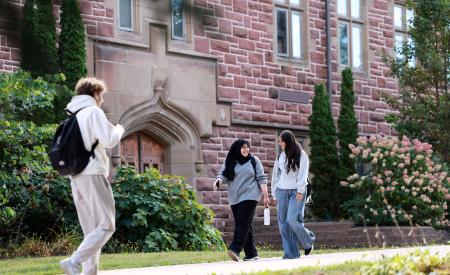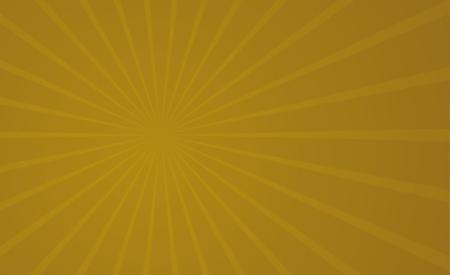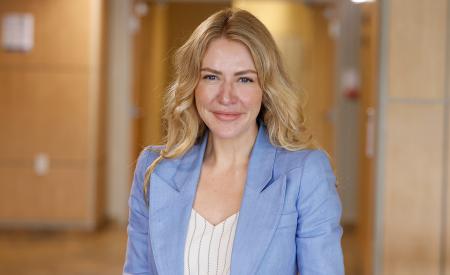Biopsychology students get to see the human brain in action
The human brain is a complex and peculiar organ — something biopsychology students at Mount Allison are learning first-hand.
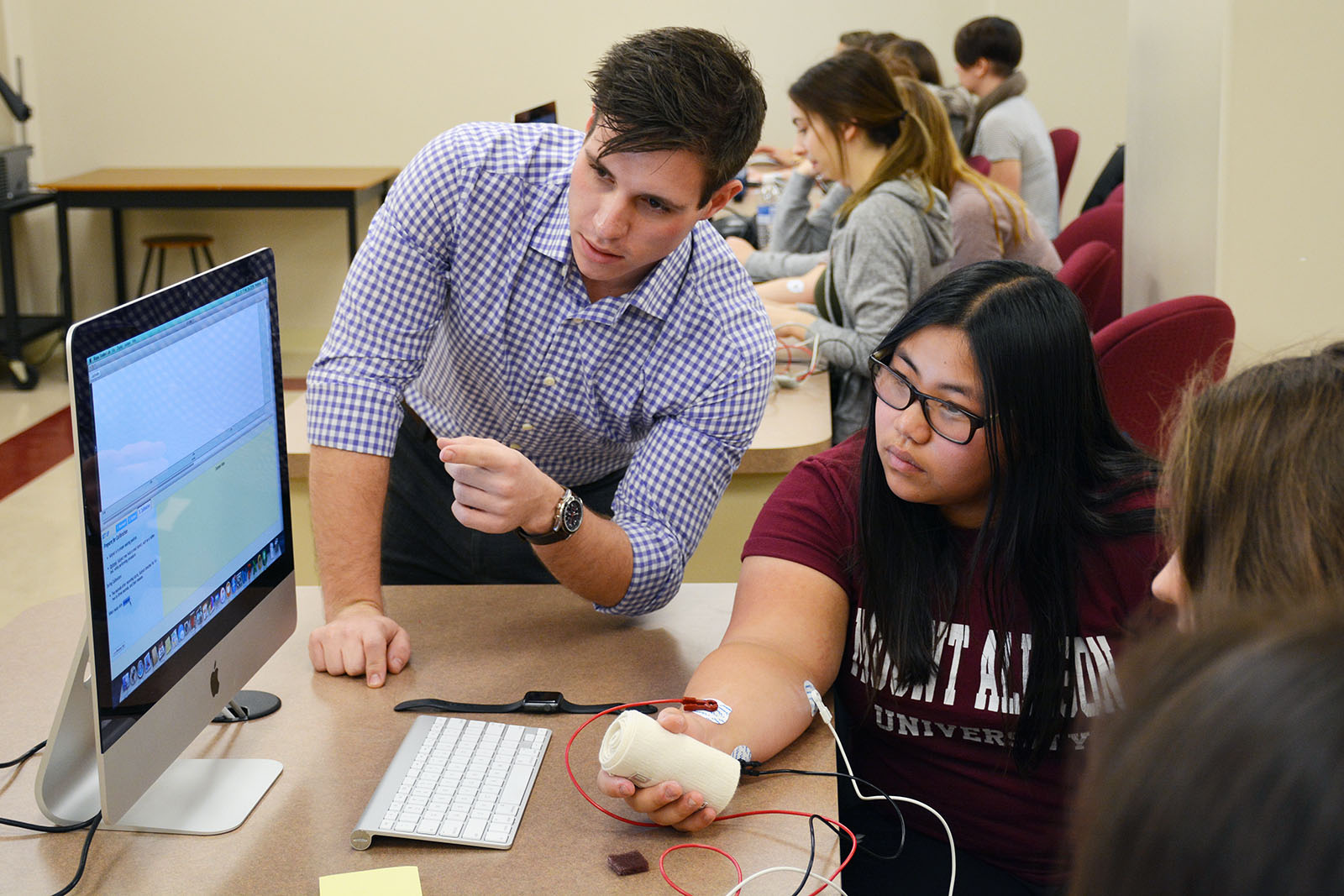
Dr. Geneviève Desmarais’ second-year biopsychology class at Mount Allison University is taking a hands-on approach to learning this year, with activities that give students the chance to try out some of the concepts they are learning in class.
Biopsychology is the study of how the brain controls behaviour.
While biopsychology lends itself to hands-on activities, lab instructor Greg Tracey, who has been developing and delivering the activities for the class, says it is an unusual approach.
“It is a unique experience. In a lot of other places, biopsychology is seen as a lecture and not a lab, so being able to give students that experience with the equipment, it inspires them to continue. It’s not just sitting and learning, it’s about learning and seeing it for yourself,” he says.
Lilyanna Simmons (’20) says the interactive activities keep the class interesting.
“Putting things into practice is very helpful,” the psychology major says. “When I leave class, I forget what I’ve learned until I review my notes. But the lab solidifies learning by practising it.”
One activity the class completed this term is known as the “rubber hand illusion.” One person lays their hand down on a table next to a rubber hand, their view of their own hand is blocked, and they can see only the rubber hand. A second person then brushes a paint brush across both hands simultaneously and the subject begins to feel as if the rubber hand is their own.
“When we learn this in class, students don’t believe that really happens — until they try it,” Desmarais says. “If it is just text in a book, it remains really abstract.”
“The more you stared at this fake rubber arm, the more it looked like a real arm,” says Clare Maguire (’20), a biology major. “It was an eerie experience. Brains are definitely interesting!”
Another experiment the students are conducting this term is prism adaptation. A special set of goggles distorts their vision so everything appears to be about six inches away from where it really is.
“So when you reach for something, it is not there, but within about five or six tries, your brain automatically corrects and you can grasp the object again,” Desmarais says. “I can describe that all I want, but if they actually get to do it, they really understand how quickly the brain adapts to sensory input.”
One of the most popular activities this term has been a chance for students to try an EEG and measure their brain activity.
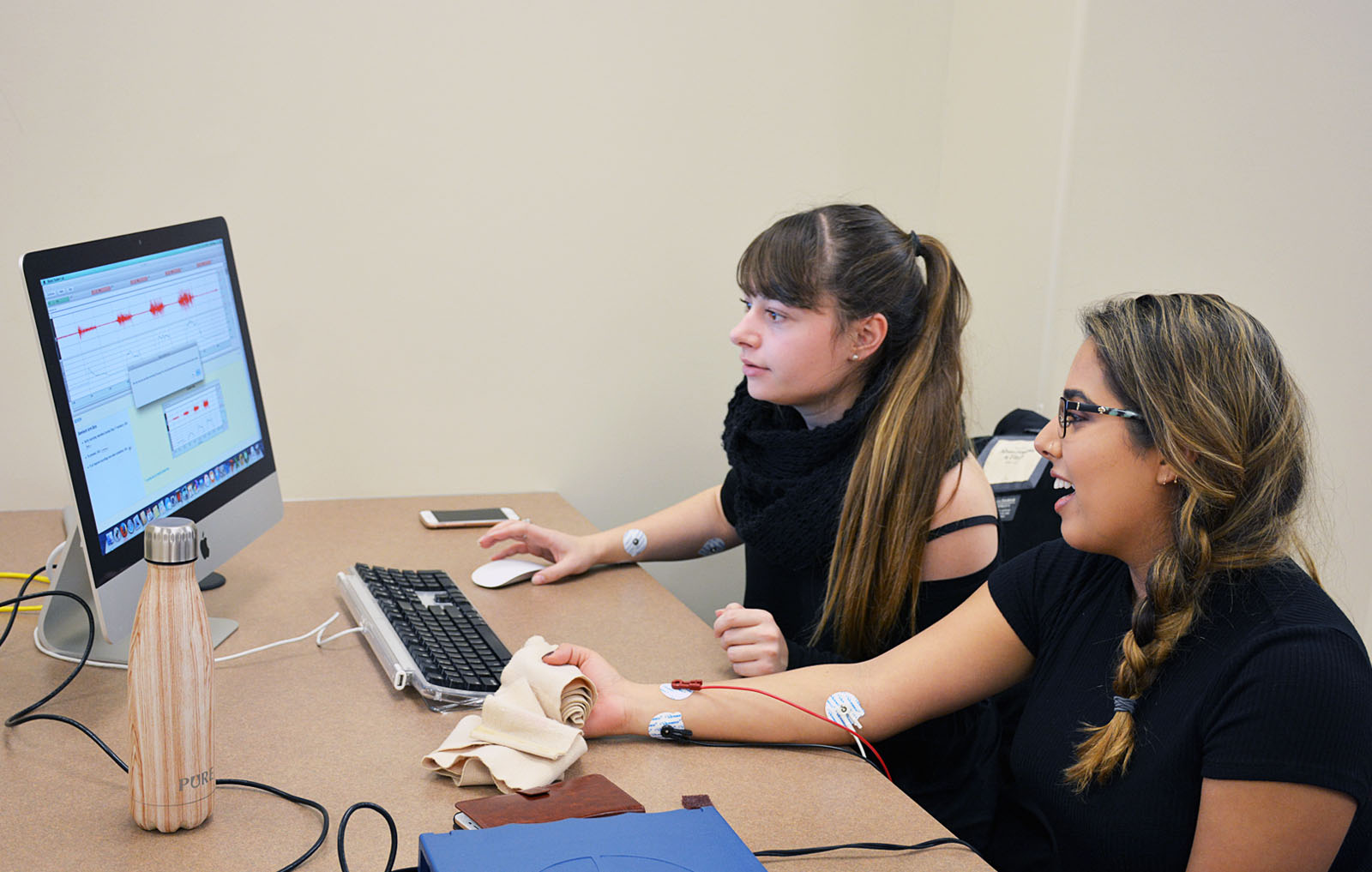
“The kind of equipment students are using here is usually only used for research at other universities, not in the classroom. It is kind of a rare experience for a second year student to see their brain waves,” Tracey says. “And reading about brain waves is completely different than seeing them. Making it your own personal experience makes it stick with you more.”
Psychology major Caitlin O’Connor (’20) says the activities make what they are learning in the classroom more applicable.
“And there is a fun aspect of it,” she says. “You’re trying new and exciting things you would never have the chance to do outside of labs like this.”


